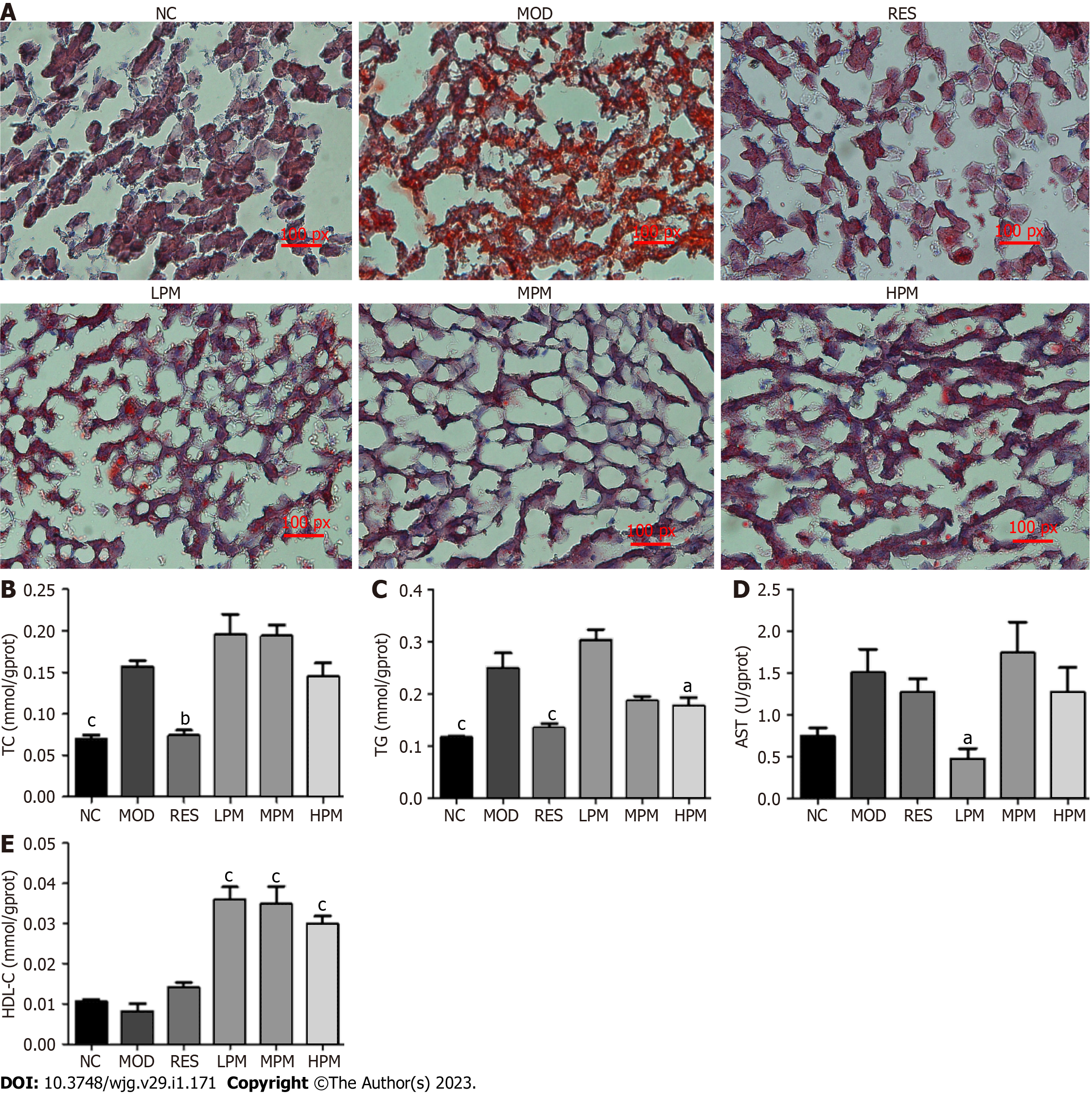Copyright
©The Author(s) 2023.
World J Gastroenterol. Jan 7, 2023; 29(1): 171-189
Published online Jan 7, 2023. doi: 10.3748/wjg.v29.i1.171
Published online Jan 7, 2023. doi: 10.3748/wjg.v29.i1.171
Figure 3 Effects of Polygonum multiflorum extract on the liver lipid content of high-fat diet-fed rats.
Sprague Dawley rats were administered saline, resveratrol, or Polygonum multiflorum extract (2, 4, or 8 g/kg/d). After 3 mo of high-fat diet feeding, rats were sacrificed, and livers were harvested. A: Liver histology after Oil Red O staining was observed under a light microscope (× 200); B: Liver levels of total cholesterol were determined using a commercial kit; C: Liver levels of triglyceride were determined using a commercial kit; D: Liver levels of aspartate transaminase were determined using a commercial kit; E: Liver levels of high-density lipoprotein cholesterol were determined using a commercial kit. Values represent the mean ± SD from six animals. aP < 0.05, bP < 0.01, cP < 0.001 vs the relevant model group. AST: Aspartate transaminase; HDL-C: High-density lipoprotein cholesterol; HPM: High-dose Polygonum multiflorum extract; LPM: Low dose Polygonum multiflorum extract; MOD: Model; MPM: Middle-dose Polygonum multiflorum extract; NC: Normal control; RES: Resveratrol; TC: Total cholesterol; TG: Triglyceride.
- Citation: Yu LP, Li YJ, Wang T, Tao YX, Zhang M, Gu W, Yu J, Yang XX. In vivo recognition of bioactive substances of Polygonum multiflorum for protecting mitochondria against metabolic dysfunction-associated fatty liver disease. World J Gastroenterol 2023; 29(1): 171-189
- URL: https://www.wjgnet.com/1007-9327/full/v29/i1/171.htm
- DOI: https://dx.doi.org/10.3748/wjg.v29.i1.171









